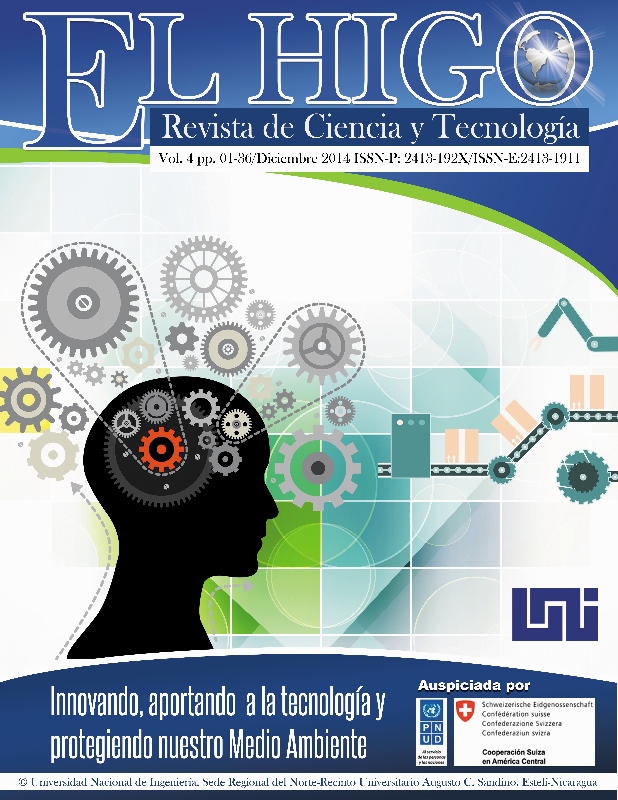Evaluation system to alternative forced evaporation landfill leachate from the open air city Esteli
Keywords:
Treatment of leachate, forced evaporation, stabilization, alternative systemAbstract
This research allowed to evaluate an alternative treatment system of leachate in the air of the city of Estelí by forced evaporation through a pilot dome greenhouse, where a system was established that simulates weather conditions, allowing an average evaporation of 0.78 cm / day and subsequently identifying gases and offensive odors emitted by leachate that were concentrated in the dome greenhouse after stabilizing these smells, which are almost negligible. This monitoring was performed for twenty consecutive days. During monitoring was determined the temperature for this leaching in a range of 26 ° up to 34 ° C with an average value of 31 ºC and this temperature range is typical for a process called anaerobic mesophile. The obtained values from measurement of evaporation showed an exponential tendency, meaning the higher the measuring point of the blade, the lower the evaporation. It deduces due to the work with two sheets of leachate within the dome. As it was analyzed during this investigation, the optimum was found at 20 cm. The implementation of this project, the evaluation of an alternative system of forced evaporation for leachate from the waste in the air of the city of Esteli, is a nationaly hardly studied field, and thus this is an opportunity and research technique that may eventually allow the use of economical and environmentally friendly technologies.
Downloads
Downloads
Published
How to Cite
Issue
Section
License
Los artículos publicados en la revista El Higo, Nicaragua, se comparten bajo términos de la licencia Creative Commons: Reconocimiento, No Comercial, Compartir Igual. que permite a terceros utilizar lo publicado siempre que mencionen la autoría del trabajo y a la primera publicación en esta revista. ![]()
Los autores/as pueden realizar otros acuerdos contractuales independientes y adicionales para la distribución no exclusiva de la versión del artículo publicado en esta revista (p. ej., incluirlo en un repositorio institucional o publicarlo en un libro) siempre que indiquen claramente que el trabajo se publicó por primera vez en esta revista.






